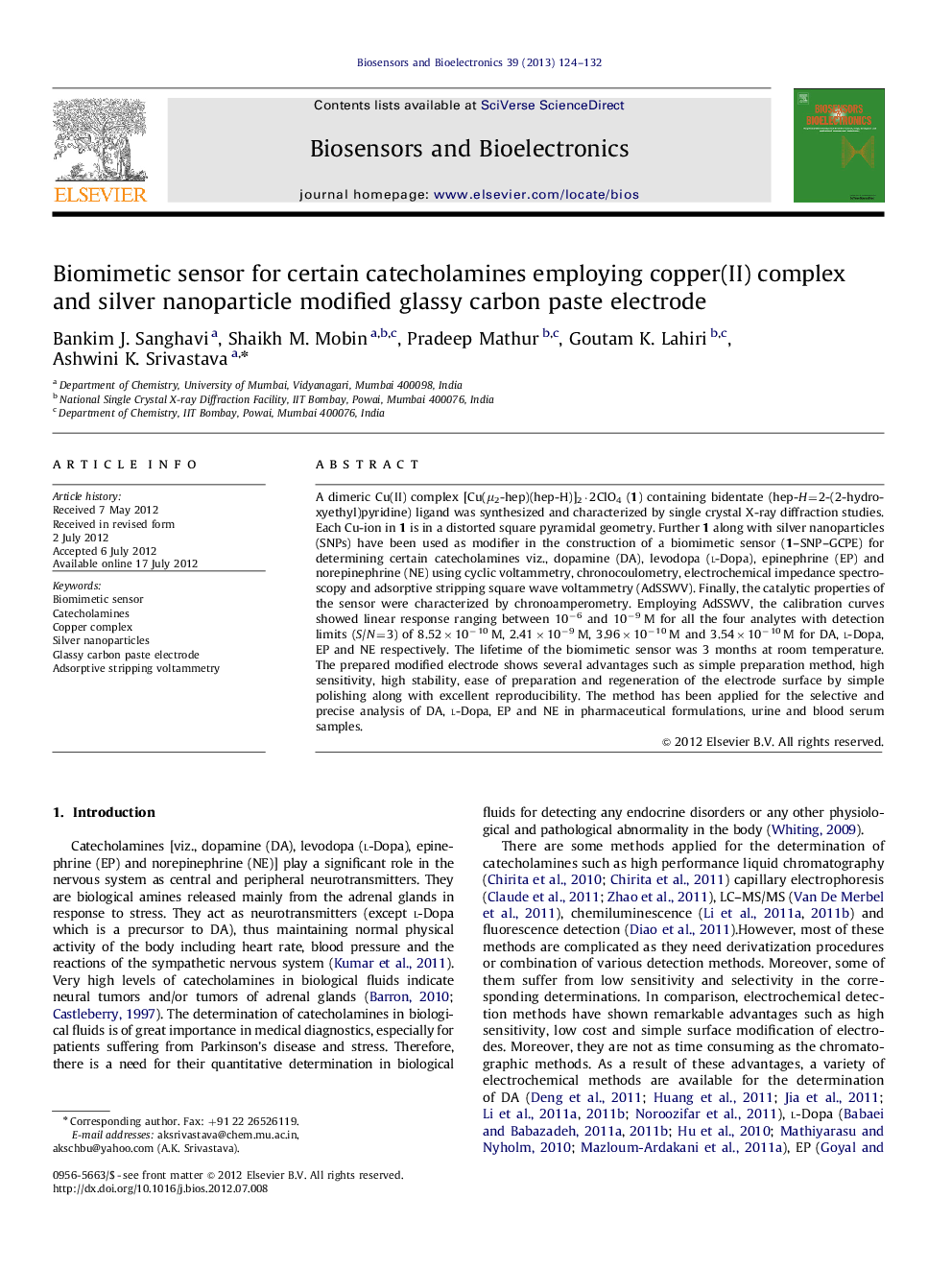| Article ID | Journal | Published Year | Pages | File Type |
|---|---|---|---|---|
| 867217 | Biosensors and Bioelectronics | 2013 | 9 Pages |
A dimeric Cu(II) complex [Cu(μ2-hep)(hep-H)]2·2ClO4 (1) containing bidentate (hep-H=2-(2-hydroxyethyl)pyridine) ligand was synthesized and characterized by single crystal X-ray diffraction studies. Each Cu-ion in 1 is in a distorted square pyramidal geometry. Further 1 along with silver nanoparticles (SNPs) have been used as modifier in the construction of a biomimetic sensor (1–SNP–GCPE) for determining certain catecholamines viz., dopamine (DA), levodopa (l-Dopa), epinephrine (EP) and norepinephrine (NE) using cyclic voltammetry, chronocoulometry, electrochemical impedance spectroscopy and adsorptive stripping square wave voltammetry (AdSSWV). Finally, the catalytic properties of the sensor were characterized by chronoamperometry. Employing AdSSWV, the calibration curves showed linear response ranging between 10−6 and 10−9 M for all the four analytes with detection limits (S/N=3) of 8.52×10−10 M, 2.41×10−9 M, 3.96×10−10 M and 3.54×10−10 M for DA, l-Dopa, EP and NE respectively. The lifetime of the biomimetic sensor was 3 months at room temperature. The prepared modified electrode shows several advantages such as simple preparation method, high sensitivity, high stability, ease of preparation and regeneration of the electrode surface by simple polishing along with excellent reproducibility. The method has been applied for the selective and precise analysis of DA, l-Dopa, EP and NE in pharmaceutical formulations, urine and blood serum samples.
► Biomimetic sensor for dopamine, levodopa, epinephrine and norepinephrine. ► Adsorptive stripping differential pulse voltammetry employed for quantitation. ► Glassy carbon paste electrode modified with copper complex and silver nanoparticles. ► Analysis of certain catecholamines in pharmaceutical formulations, blood serum and urine.
